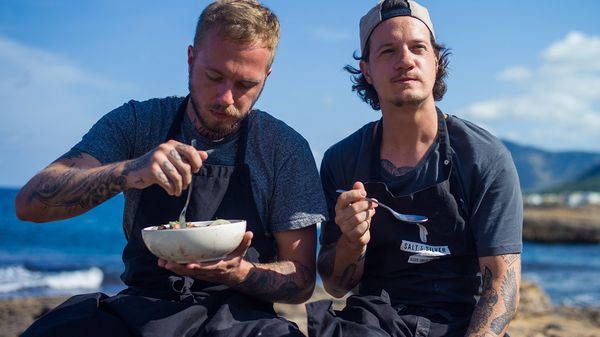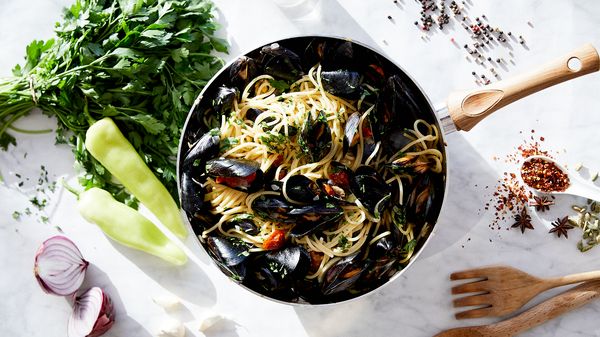where the Salzkammergut and Styria meet, the Dachstein towers over the landscape and the lakes carve into the steep valleys like the fjords of Scandinavia, Lake Grundl can be found – an idyll at the end of a gently rolling valley, flanked by chalk white peaks. Beyond the lake is the void: the Tote Gebirge mountain range. It is a barren Alpine landscape which stretches for kilometres.”

A man, a wooden boat, and his search for perhaps the most extraordinary of all alpine fish – Alexander Scheck is a fisherman who specializes in lake char. He finds very special specimens in the Aussee region.
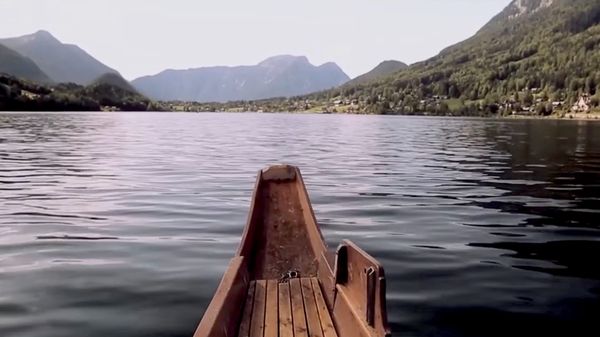

A delicious boat trip.
On a boat trip with fisherman Alexander Scheck, there are three things you need to bring along: waterproof clothing, patience, and two helping hands. It takes a lot of work and a great deal of experience to track down a delicacy such as this in the lake’s clear mountain water. As simple and pure as the char grows in nature is also how it tastes the best: from the fire directly to the plate.
IN THE MOST REMOTE CORNER OF THE NORTHERN AUSTRIAN ALPS
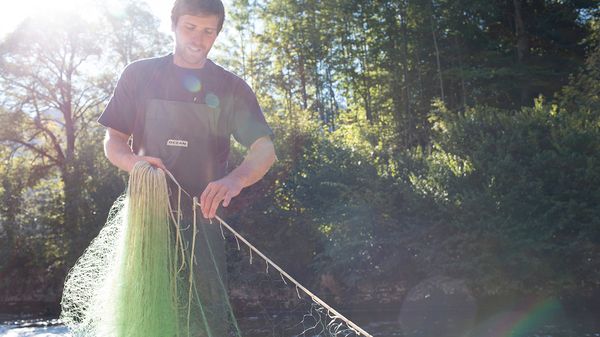
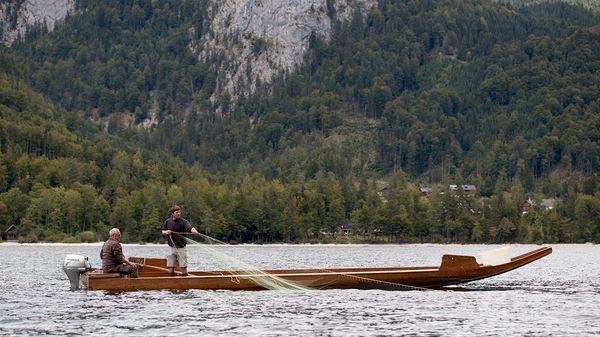
“The lake’s water is so pure you can drink it”
says Alexander Scheck as he prepares his nets in the boathouse. He takes one last look at the sky from the jetty. It is calm. Only a few thin clouds are float over the mountains. “There is not a single village or town beyond the lake. The water comes directly from springs high in the mountains. It is filtered through limestone and flows into the lake. That is one of the reasons why the lake char is so special here.”
It is late afternoon
The nets have to be cast. The lake is 5.7 kilometres long and almost one kilometre wide. Alexander Scheck starts the engine on his “Plätte” – the name given to this typically long, wooden fishing boat with a flat bottom, a design that has been used on Lake Grundl for decades and which makes it possible to easily land anywhere on the lake shore. He places the nets in the bow and sets off. “The lake char is a very special fish. You can’t compare them to trout. The char has a much finer taste; I would say it is nuttier.” Alexander Scheck is a passionate fisherman by his own admission. At the weekend he helps out behind the counter at the fish market. He is 31 and an able man who loves the mountains and lakes in equal measure. His parents own an inn at the end of the lake; the speciality of the house is char. “I grew up with fishing rods and cooking pots. I know that the best fish is always the one you catch yourself,” he says. “The only thing that can beat it is a fish you’re not really allowed to catch.” Alexander laughs, his eyes twinkle mischievously. The sins of youth, fishing during the off season. Those days are long gone.
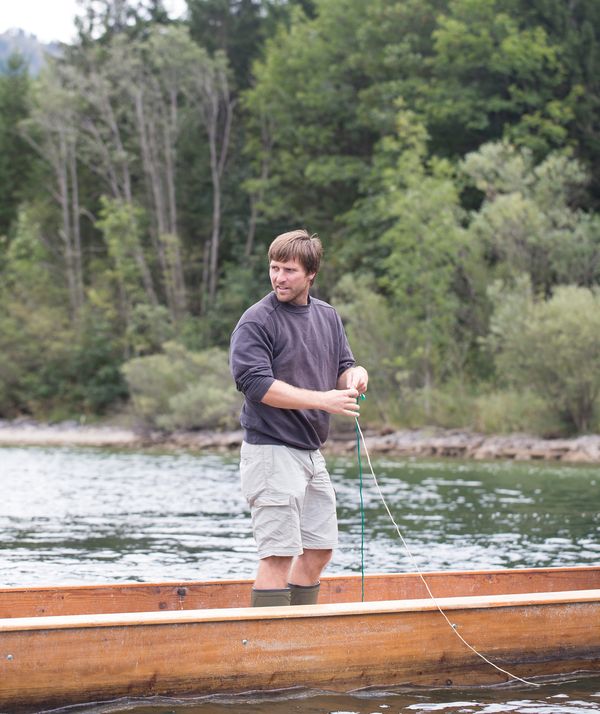
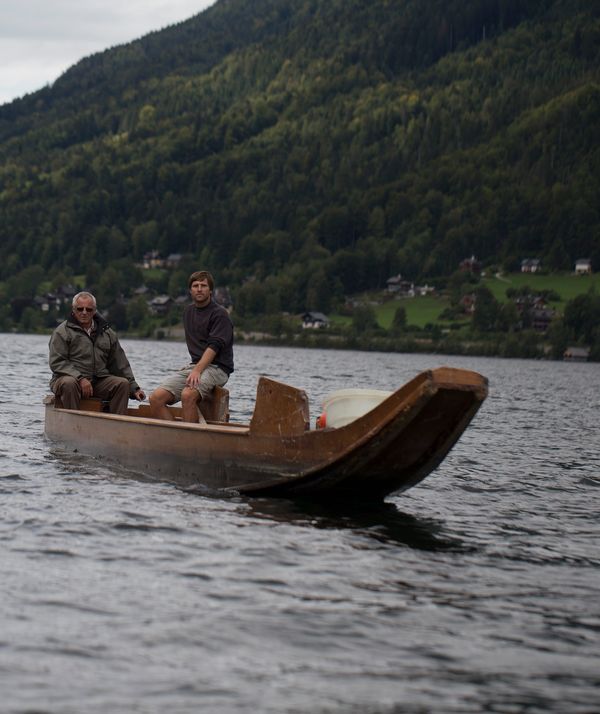
It is late afternoon
The nets have to be cast. The lake is 5.7 kilometres long and almost one kilometre wide. Alexander Scheck starts the engine on his “Plätte” – the name given to this typically long, wooden fishing boat with a flat bottom, a design that has been used on Lake Grundl for decades and which makes it possible to easily land anywhere on the lake shore. He places the nets in the bow and sets off. “The lake char is a very special fish. You can’t compare them to trout. The char has a much finer taste; I would say it is nuttier.” Alexander Scheck is a passionate fisherman by his own admission. At the weekend he helps out behind the counter at the fish market. He is 31 and an able man who loves the mountains and lakes in equal measure. His parents own an inn at the end of the lake; the speciality of the house is char. “I grew up with fishing rods and cooking pots. I know that the best fish is always the one you catch yourself,” he says. “The only thing that can beat it is a fish you’re not really allowed to catch.” Alexander laughs, his eyes twinkle mischievously. The sins of youth, fishing during the off season. Those days are long gone.
"I may as well be eating roast chicken or a fish finger.”
Alexander Scheck rails against those who commit the “sin” of seasoning a fish with garlic. He laughs, but he is totally serious. Alexander Scheck, the fisherman, takes real pleasure in authentic taste and unadulterated fare. He embodies slow food without actually referring to it as such. People eat a lot of fish in the Aussee region.
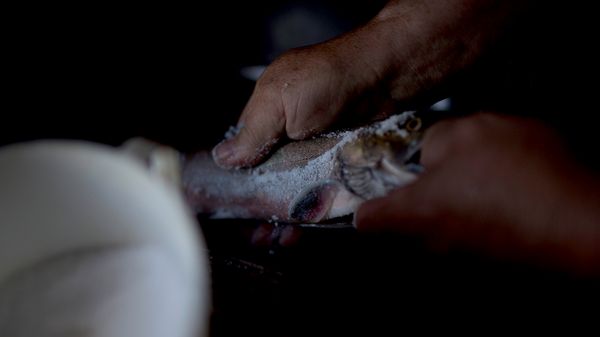
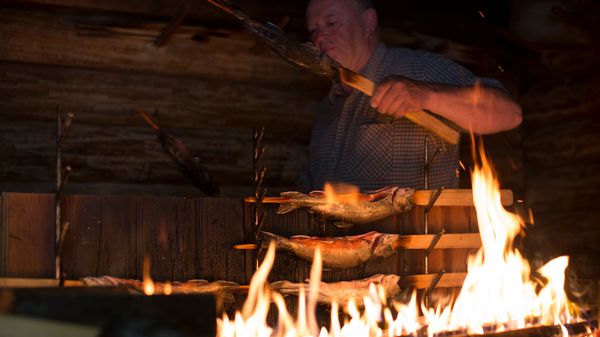
“THE FISH TASTES BEST WHEN IT IS GRILLED OVER THIN PIECES OF BEECHWOOD ON THE CAMPFIRE."
Like it was done at the traditional ‘Lechpartien’,” says Alexander, referring to the spontaneous afternoons, when they would grill a few fresh char on the banks of the lake during the spawning season in autumn. These days, people get together for a “Lechpartie” in a hut by the lake. “You rub lots of salt into the fish one and a half hours beforehand, then you wipe off the salt and liquid and cook it about 30 centimetres above the fire for around 12 to 15 minutes. It is really important to leave the skin on. If it is lightly salted, it is the best part of the fish! And the char hardly has any scales anyway.
BUT WHAT MAKES THE AUSSEE CHAR SO SPECIAL?
Lake Grundl and the other lakes in the region are extremely clean. In fact, they are so clean that the fish find very little food. “The lake char doesn’t grow very big around here, but it has adapted perfectly to the lack of nutrients in the mountain lakes. The fish is actually a member of the salmon family and found its natural habitat here after the last Ice Age.” All the lake char found south of the main Alpine ridge were introduced there by humans at some point and they are not native to the area. “The char doesn’t find much to eat here. It has to swim a great deal and search for plankton.”
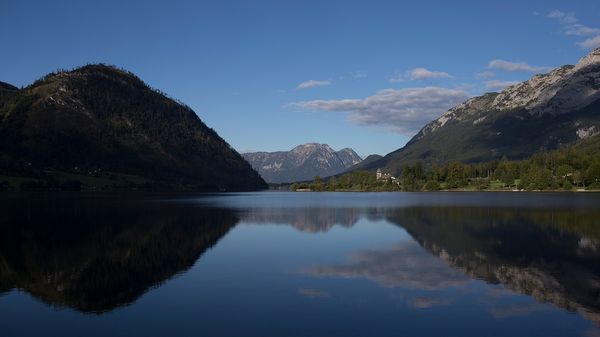
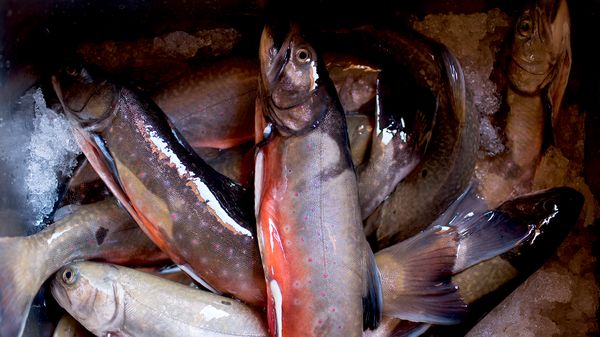
That affects the quality of the fish in two ways:
The meat is extremely tender – and the stomach and flesh of the Lake Grundl char are a pale red colour. “That comes from the plankton that the char eats here. There are too few small fish in these lakes, so the hunter has turned into a pure plankton eater.” And the plankton turns the char’s stomach and flesh light pink - the characteristic feature of the Aussee char is a completely natural phenomenon.
It is seven o’clock
and the mild late summer weather has changed into a rainy and grey autumn. Alexander is standing on his boat wearing a rain cape and waders and is pulling one char after another out of the water.At the end of the day there will be around 50 fish. A solid catch. On good days there can be as many as 200 char in the nets.
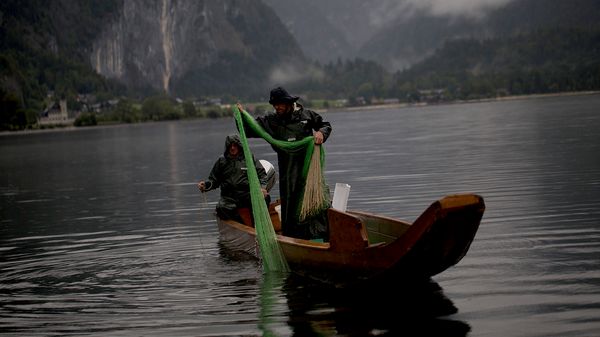
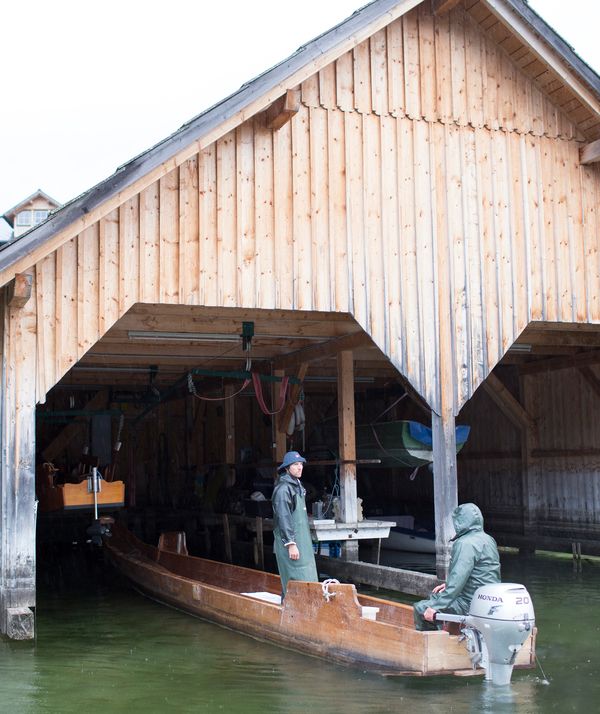
"THE MEAT IS MUCH FINER"
“You can tell from the flavour when a fish comes from a lake. And you can also see it.” In what way? “You can tell how fresh a fish is by the red colour around its gills and its clear eyes; the same goes for most fish. But we can also tell the quality by its fins.” He pulls the next specimen out of the net, frees the snagged fish from the green yarn and kills it with two brief and skilled blows on the boat’s rail. Then he points to the fins. “If a fish comes from a farm, it has stubby fins, because it has little room to swim about in the pool. A real wild fish has strong, beautiful fins, like this one here.” They were caught, cured, and delivered to the court in Vienna. Grilled, smoked, or pickled in vinegar. Today, everyone is able to eat a fresh lake char. You just have to turn up at the fish market at the right time.

